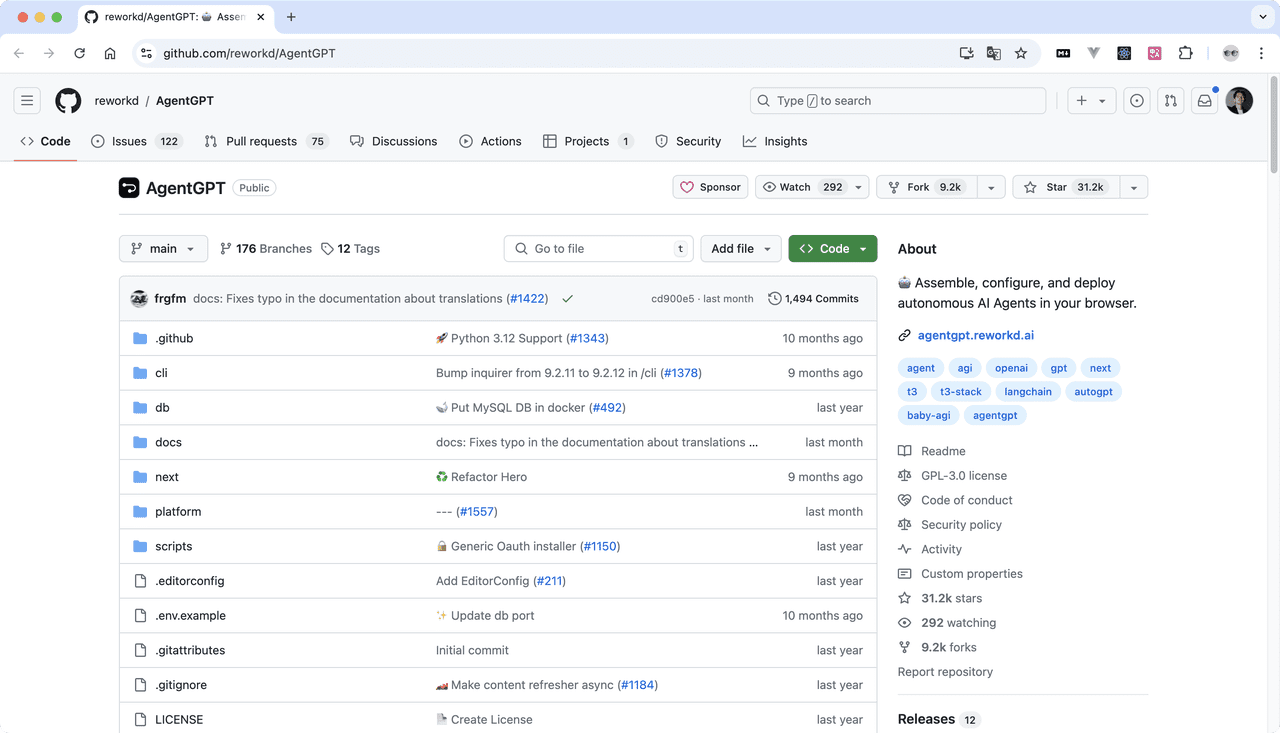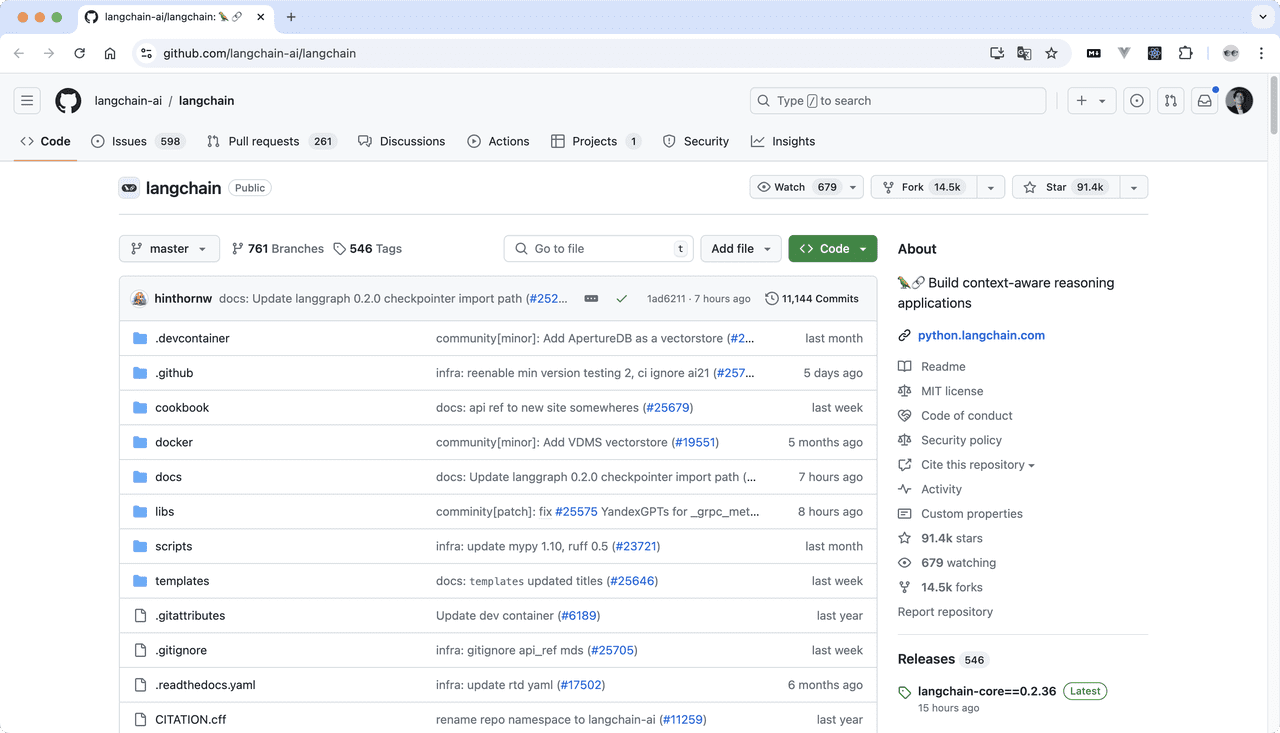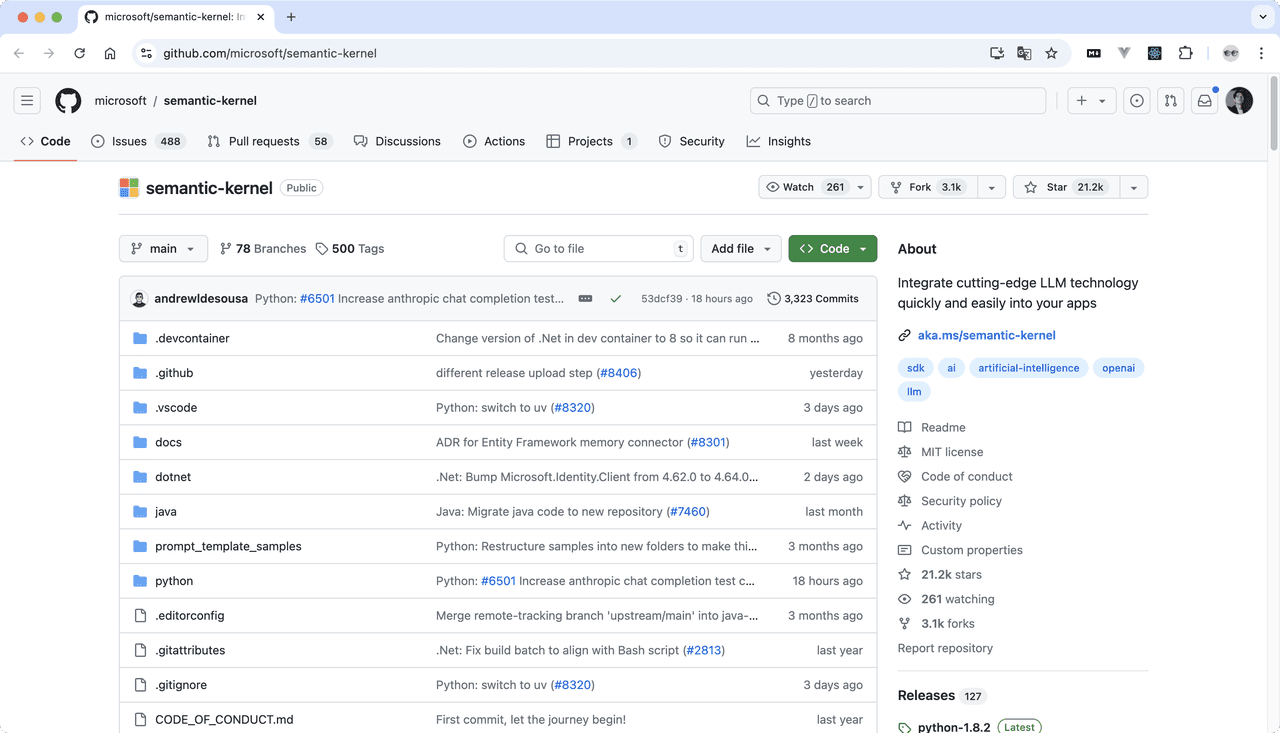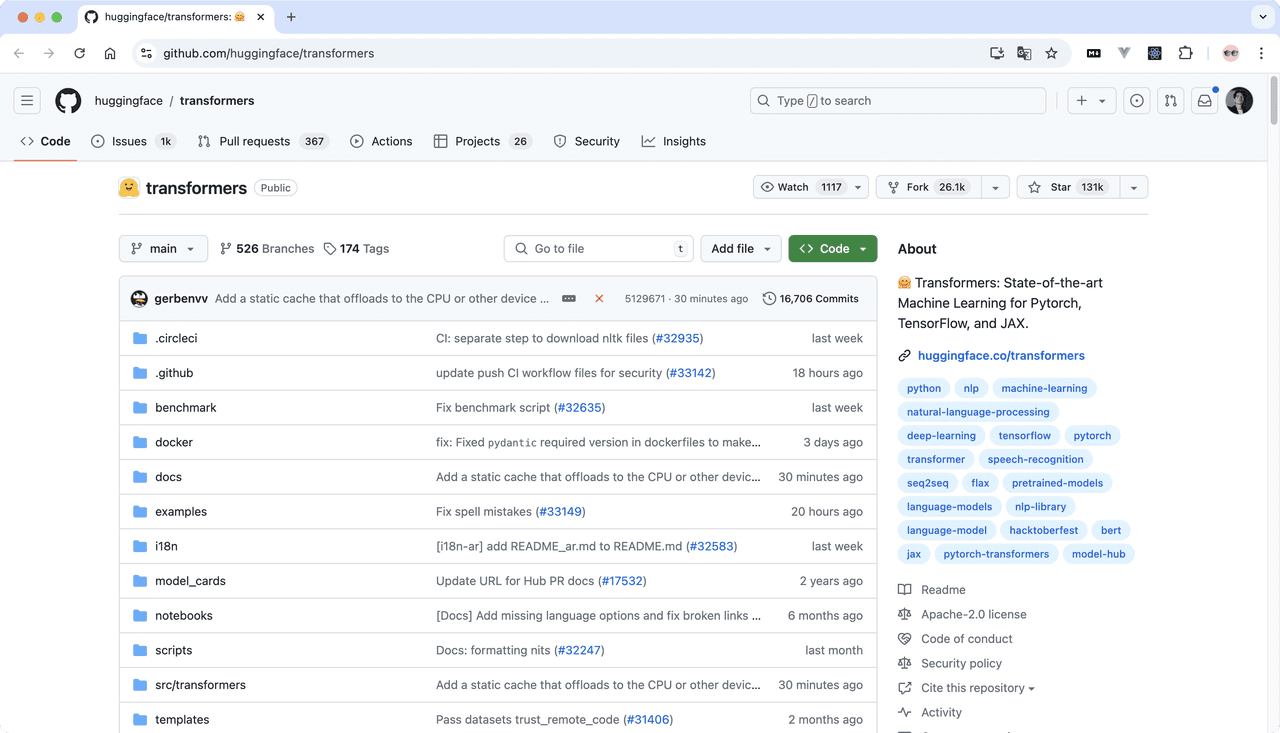Overview of 10+ Popular AI Agent Tools and Platforms
AI Agent technology is rapidly advancing, with key tools including AutoGPT, GPT-4, Claude 3.5, Gemini, AgentGPT, BabyAGI, LangChain, Dify, Semantic Kernel, Transformers Agents, and Meta AI Agents, demonstrating great potential in automation, multimodal interaction, and intelligent decision support.
AI is transforming our world at an unprecedented pace, and in this transformation, AI Agents are undoubtedly one of the most eye-catching stars. But what is an AI Agent? Simply put, an AI Agent is an AI system capable of autonomously perceiving the environment, making decisions, and taking actions to achieve specific goals. They are not just programs that execute preset instructions, but digital assistants with a certain degree of "intelligence" and autonomy.
In 2024, the development of AI Agent technology can be described as rapidly evolving. From simple task automation to complex decision support systems, and to agents capable of autonomous learning and interaction in the virtual world, the application scope of AI Agents is continuously expanding. In the modern business and technology ecosystem, AI Agents have become a key tool for improving efficiency, optimizing processes, and enhancing innovation.
So, in this rapidly developing field, what tools and platforms deserve our attention? Next, we will introduce in detail the 25 hottest AI Agent tools and platforms currently available.
AutoGPT
AutoGPT is an open-source intelligent AI agent that has garnered widespread attention (currently with 166k stars on Github). Its uniqueness lies in its ability to autonomously complete complex multi-step tasks. Imagine giving AutoGPT a goal, such as "research and write a report on renewable energy," and it can automatically break down the task, search for information, organize data, and ultimately generate a complete report.
The core advantage of AutoGPT lies in its task automation and autonomous decision-making capabilities. It uses a large language model like GPT-4 as its "brain," capable of understanding complex instructions, making plans, and executing a series of operations to achieve goals. For tasks that require a large amount of information collection and analysis, AutoGPT can greatly improve efficiency.
However, using AutoGPT also requires attention to some issues. Due to its high degree of autonomy, unexpected results may sometimes occur. Therefore, human supervision and result verification are still very important when used in key tasks.

GPT-4 (OpenAI)
When it comes to AI Agents, one cannot help but mention the foundation that supports many advanced Agents - GPT-4. As the latest generation of large language models introduced by OpenAI, GPT-4 has shown astonishing capabilities in natural language processing.
The most notable feature of GPT-4 is its powerful understanding and generation capabilities. It can not only understand complex contexts and meanings but also generate high-quality, coherent text. This makes GPT-4 an ideal foundation for building various advanced AI Agents.
For example, you can build a professional legal assistant Agent based on GPT-4. This Agent can understand complex legal terms, parse lengthy legal documents, and even provide preliminary legal advice (of course, the final decision still requires human professionals). Alternatively, you can create a creative writing Agent that can generate engaging storylines based on simple prompts.
When building Agents with GPT-4, developers need to pay attention to how to effectively set prompts and constraints to ensure that the Agent's output is as expected and consistent. At the same time, due to GPT-4's powerful capabilities, special attention to privacy and security issues is also required when handling sensitive information.
Claude 3.5 (Anthropic)
Claude 3.5, developed by Anthropic, is an AI assistant known for its emphasis on safety and ethics (the seriousness of the title is true). Against the backdrop of increasing attention to AI ethics issues, this feature of Claude 3.5 is particularly important.
A highlight of Claude 3.5 is its excellent long-text processing capability. It can easily handle inputs of up to 100,000 tokens, equivalent to the length of a small book. This makes Claude 3.5 particularly suitable for tasks that require analysis of large amounts of textual data, such as literature reviews and contract reviews.
Another noteworthy feature is Claude 3.5's multi-round dialogue capability. It can maintain the context of the conversation very well, making the interaction more natural and smooth. For example, you can use Claude 3.5 to build a customer service Agent that can understand complex customer questions and provide coherent, targeted answers in multiple rounds of dialogue.
When using Claude 3.5, developers will find that it is particularly cautious when dealing with sensitive topics. This is a reflection of Anthropic's so-called "Constitutional AI" philosophy, aimed at creating safer and more controllable AI systems.
Gemini (Google)
Google's Gemini model is an important milestone in the field of AI. As a truly multimodal AI model, Gemini can not only process text but also understand and generate images, audio, and video.
The most eye-catching feature of Gemini is its cross-modal understanding ability. For example, you can show Gemini a picture and then ask a question in natural language, and Gemini can understand the content of the picture and give an appropriate answer. This ability makes Agents based on Gemini more comprehensive in understanding and interacting with the world.
In terms of complex task processing, Gemini also performs well. It can handle multi-step problem-solving processes, from understanding the problem, breaking down tasks, to step-by-step execution, all can be completed well. This makes Gemini particularly suitable for building advanced agents in fields such as educational tutoring, scientific research, and creative design.
However, building Agents with Gemini also faces some challenges. Due to its powerful multimodal capabilities, how to effectively integrate different types of inputs and generate coherent outputs requires careful design and adjustment by developers.
AgentGPT
AgentGPT is a browser-based AI agent platform that allows ordinary users to easily create and use AI Agents. The biggest feature of this platform is its user-friendly interface; you don't need programming knowledge to define tasks, set goals, and then watch the AI Agent execute automatically.
AgentGPT's task automation capabilities are very practical. For example, you can ask it to help you plan a trip. You just need to enter the destination, budget, and preferences, and AgentGPT will automatically search for relevant information, make a travel plan for you, and even recommend attractions and restaurants.
For small business owners or individual entrepreneurs, AgentGPT can be a powerful assistant. It can help you with market research, generate content ideas, and even develop simple marketing strategies. Of course, these results still need to be reviewed and adjusted manually.
When using AgentGPT, users need to pay attention to how to clearly define task goals. The performance of the Agent largely depends on the quality of the task description. At the same time, for tasks involving personal privacy or sensitive business information, users also need to be extra careful.

BabyAGI
BabyAGI is an engaging task management and execution system. Although its name is "Baby" (infant), its capabilities are by no means "childish." The core advantage of BabyAGI lies in its excellent goal decomposition and task planning capabilities.
Imagine giving BabyAGI a big goal, such as "organize a successful company annual meeting." BabyAGI will immediately start working, first breaking down this big goal into a series of small tasks: determining the date and location, planning event content, arranging catering, inviting guests, and so on. Then, it will develop a detailed execution plan for each task and prioritize them.
Another highlight of BabyAGI is its self-improvement capability. During the task execution process, it will continuously learn and adjust, gradually optimizing its task management strategy. This makes BabyAGI particularly suitable for long-term project management or continuous workflow optimization.
In practical applications, BabyAGI can serve as a powerful personal assistant or project management tool. For example, researchers can use it to manage complex research projects, and marketing teams can use it to coordinate multi-channel marketing activities.
However, using BabyAGI also requires attention to some issues. Due to its high degree of autonomy, it may sometimes generate overly complex or unrealistic plans. Therefore, regular manual review and adjustment are still very important.
LangChain
LangChain is a popular framework for building applications based on large language models (LLM). Its emergence has greatly simplified the development process, making it easier for developers to create complex AI applications and Agents.
The biggest feature of LangChain is its flexibility and scalability. It provides a series of components that can be easily combined, including prompt templates, memory modules, document loaders, etc. This allows developers to quickly build customized AI workflows according to their needs.
For example, with LangChain, you can easily create a chatbot that can access external data sources, remember conversation history, and generate responses based on context. Or, you can build a document analysis Agent that can automatically summarize long documents and extract key information.
Another advantage of LangChain is its extensive integration capabilities. It supports various popular LLMs, such as OpenAI's GPT series, Google's BERT, etc., and can easily integrate with various external tools and APIs. This means you can create Agents that can perform actual operations, such as sending emails, updating databases, etc.
For those who want to delve into AI application development, learning and using LangChain is a good choice. However, it does require some programming knowledge and may be challenging for complete beginners.

Dify
Dify is a powerful open-source LLMOps (Large Language Model Operations) platform that has made the development and deployment of AI applications simpler than ever before.
The biggest feature of Dify is its visual AI application development interface. You don't need a deep programming background to create complex AI applications by dragging and dropping components and setting parameters. This greatly reduces the threshold for AI development and allows more people to participate in AI innovation.
For example, with Dify, you can easily create a customer service chatbot. You can visually design the conversation flow, define intent recognition rules, and even integrate external data sources to provide real-time information. The whole process is as intuitive as drawing a flowchart.
Another highlight of Dify is its rapid deployment capability. Once you have completed the design of the application, it can be deployed to the production environment with just a few clicks. Dify provides complete application lifecycle management, including version control, performance monitoring, error analysis, and more.
However, using Dify also requires attention to some issues. Although it simplifies the development process, creating truly high-quality, high-performance AI applications still requires an in-depth understanding of AI technology. In addition, when dealing with sensitive data, users need to pay special attention to data security and privacy protection issues.

Microsoft's Semantic Kernel
Microsoft's Semantic Kernel is a powerful AI integration SDK that provides developers with a new way to build intelligent applications. The core concept of Semantic Kernel is to modularize AI functions, allowing them to be combined like Lego bricks.
The biggest feature of Semantic Kernel is its composable AI capabilities. Developers can create small AI function modules called "skills" and then combine these modules into more complex workflows. For example, you can create a text summarization skill, an emotion analysis skill, and a translation skill, and then combine them to create an Agent that can analyze, summarize, and translate foreign news.
Another important feature is Semantic Kernel's seamless integration with various AI services. It not only supports Microsoft's own Azure AI services but can also easily integrate third-party models like OpenAI's GPT. This flexibility allows developers to choose the AI services that best suit their needs.
In practical applications, Semantic Kernel is particularly suitable for building enterprise-level AI applications. For example, you can use it to create an intelligent document processing system that can automatically classify documents, extract key information, generate summaries, and even trigger corresponding business processes based on the content.
However, using Semantic Kernel also requires a certain learning curve. Developers need to understand its core concepts, such as skills and plans, to fully leverage its potential. At the same time, how to design and organize these composable AI functions to create truly valuable applications is also a question that requires in-depth consideration.

Hugging Face Transformers Agents
Hugging Face's Transformers Agents is an extremely flexible and powerful multimodal AI agent framework. It is built on Hugging Face's popular Transformers library, providing developers with a simple yet powerful way to create complex AI applications.
The biggest advantage of Transformers Agents is its extensive model support and ease of use. It can easily integrate various pre-trained models, including but not limited to models in the fields of natural language processing, computer vision, and speech recognition. This means you can create multimodal agents that can understand and generate text, images, and audio.
For example, with Transformers Agents, you can create a virtual assistant that can not only answer text questions but also understand images uploaded by users, and even generate related images or audio content. This multimodal capability makes AI interaction richer and more natural.
Another noteworthy feature is Transformers Agents' task planning capability. It can break down complex tasks into a series of subtasks and select appropriate models to perform each subtask. This intelligent task management makes the Agent capable of handling more complex and diverse requests.
For researchers and developers, Transformers Agents provides an ideal experimental platform. You can easily try different model combinations and quickly prototype new AI application ideas.

Meta's AI Agents
Meta (formerly Facebook) focuses on the application of AI Agents in social media and the metaverse environment. Meta's AI Agents aim to create smarter, more natural virtual interaction experiences, which are crucial for the company's social platform and virtual reality ambitions.
A key feature of Meta AI Agents is their social interaction capabilities. These Agents are designed to understand complex social situations, including linguistic nuances, emotional expressions, and cultural backgrounds. For example, on Meta's social platforms, these Agents can act as virtual assistants, helping users manage social interactions, recommend interesting content, and even act as mediators in discussions.
Another important feature is the adaptability of Meta AI Agents in virtual environments. With Meta's significant investment in the metaverse, these agents are developed to move and interact naturally in 3D virtual spaces. They can serve as virtual tour guides, educational assistants, or game characters, providing users with immersive experiences.
In practical applications, Meta's AI Agents may be used to create smarter content recommendation systems, personalized virtual assistants, or even complex virtual world NPCs (non-player characters). For example, in a virtual meeting room in the metaverse, an AI Agent can act as a meeting assistant, translating different languages in real-time, summarizing discussion points, and even providing creative suggestions.
AWS Bedrock
Amazon Web Services (AWS) Bedrock is a comprehensive generative AI development platform aimed at simplifying the creation and deployment process of enterprise-level AI applications. It provides a suite of powerful tools and services that allow developers to easily build and manage various types of AI Agents.
A main feature of Bedrock is its deep integration with AWS cloud services. This means developers can easily combine AI capabilities with other AWS services (such as data storage, analytical tools, etc.). For example, you can create an AI Agent that can directly read data from an AWS S3 bucket, analyze it using machine learning models, and then store the results in Amazon DynamoDB.
Another important feature of Bedrock is its scalability. It supports a seamless transition from small-scale experiments to large-scale production deployments. Developers can start on a small scale and then easily scale their AI applications as demand grows without significantly changing the underlying architecture.
In practical applications, AWS Bedrock can be used to build various types of AI Agents. For example, in the financial services industry, an intelligent investment advisory Agent can be created that analyzes market data, customer investment portfolios, and provides personalized investment advice. In the healthcare sector, a patient care assistant can be developed to help doctors analyze medical records, provide diagnostic suggestions, and monitor patient recovery.
Conclusion
Through the detailed introduction of these more than 10 popular AI Agent tools and platforms, we can see that AI Agent technology is rapidly developing and being applied in various fields. From general-purpose conversation systems like GPT-4 to specialized tools and the creative field, AI Agents are reshaping the way we interact with technology.
In the future, the development direction of AI Agent technology may include:
- Stronger multimodal interaction capabilities, capable of seamlessly processing various inputs and outputs such as text, images, and voice.
- Deeper task understanding and planning capabilities, capable of handling more complex and long-term tasks.
- Better context understanding and memory capabilities, capable of maintaining consistency in long-term interactions.
- Stronger reasoning and creativity capabilities, not only executing instructions but also proposing new insights and solutions.
These technological advancements will have a profound impact on various industries. In the business sector, AI Agents may completely change the way customer service, marketing, and operational management are conducted. In the research field, they may accelerate the process of scientific discovery. In the creative industry, AI may become a powerful assistant to human creativity.
However, as AI Agents become more powerful and ubiquitous, we also face a series of ethical and security challenges. How to ensure the transparency and explainability of AI decision-making, how to protect user privacy, how to prevent the misuse of AI, and how to balance AI efficiency with human employment are all issues that we need to think about and solve seriously.
Finally, it is worth emphasizing that despite the rapid development of AI Agent technology, they remain tools, extensions of human intelligence, not replacements. The focus for the future should be on how to best utilize these tools to enhance human capabilities, solve practical problems, and promote social progress. In this era of rapid development of AI Agents, staying curious, continuously learning, and thinking rationally will be the key for everyone to meet future challenges.
Learn more: